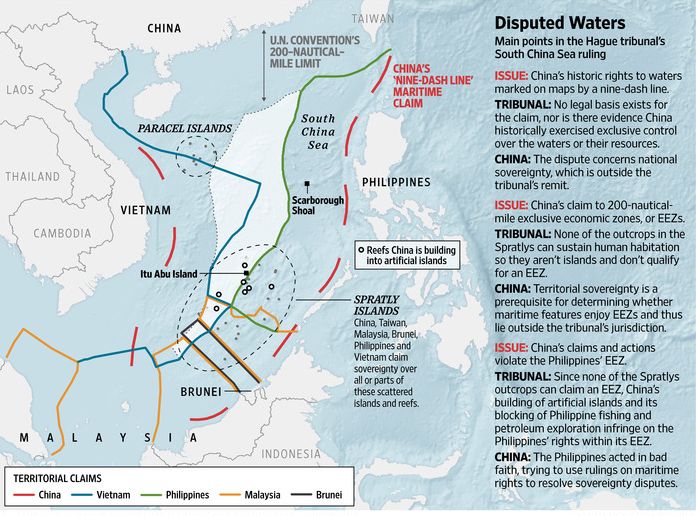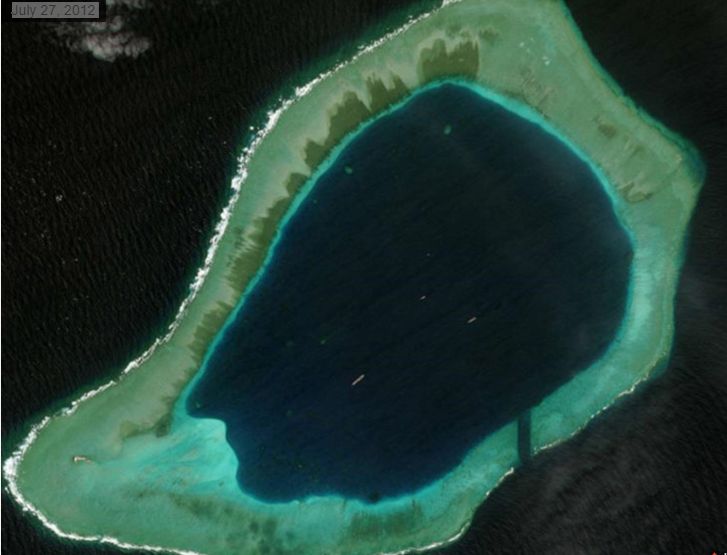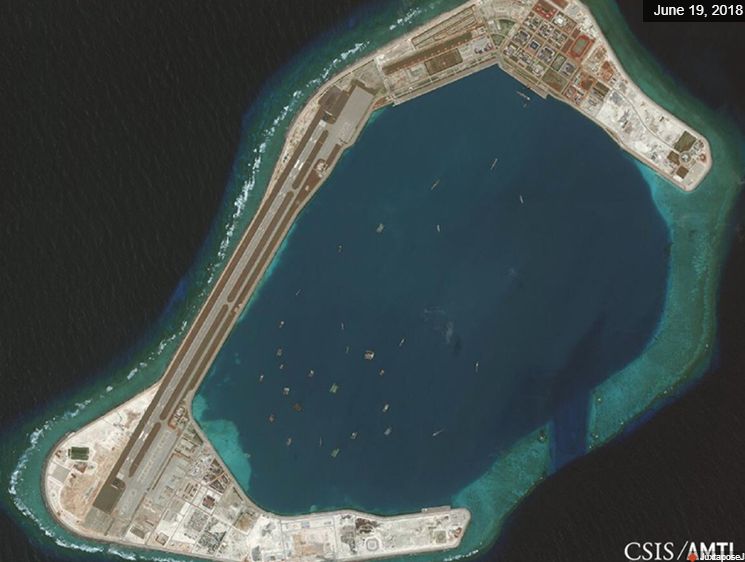By Eric Vandenbroeck and co-workers
Following up on a
subject I have covered for a number of years, two
days ago marked three years since a
tribunal found that China's claim of historic rights in the South China Sea was
unlawful. And willing to push back stronger than the Philippines four
heavily armed Vietnamese coastguards have been involved in a week-long
confrontation with Chinese vessels.
To be clear some of
China’s maritime disputes span centuries and started with the Champa Sea or Sea
of Cham a maritime kingdom that flourished before the sixteenth century.
From around the 6th
to the 15th centuries, the South China Sea in fact was known by navigators
throughout Asia as the Champa Seaits various
kingdoms, presided over by regional royal families, also included sizable
portions of eastern Cambodia and Laos.
The oldest artifacts of a distinctly Cham
civilization, brick flooring, sandstone pillars, and pottery found at Tra
Kieu in Quang Nam Province, date to the second century A.D.
The Champa empire was
the chief rival of the Khmer Empire, in Cambodia, and Dai Viet, an early
Vietnamese kingdom to the north. Champa's conflicts with Dai Viet seem to have
started at the end of the tenth century, as the Vietnamese pushed south to the
Cham kingdom of Vijaya (today's Quy Nhon).
Bas
reliefs in a temple at Angkor depict an epic naval battle between the Khmer
and Champa in the 12th century. The Cham navy was unrivaled, but on land the
Cham suffered many costly defeats.
Territorial wrangling
continued until 1471, when Vijaya was finally captured, and by the mid-1600s
the Champa empire had been reduced to its southern kingdom of Panduranga (now
Ninh Thuan and Binh Thuan Provinces, where most of Vietnam's Cham descendants
live today). By then, a Cham diaspora had spread to Cambodia, Hainan, the
Philippines and Malaysia.
In 1832, Emperor Minh
Mang set out to crush the last vestiges of Cham autonomy and stamp out the
culture, burning Cham villages and farmland and destroying ancient temples.
Many Cham fled to Cambodia, where their descendants
number in the hundreds of thousands today.
Whereby the by me
reported on violent demonstrations protests in China against Japan in 2012 can
be traced to the Sino-Japanese War of 1894, while Japan’s defeat in World War
II and Cold War geopolitics added complexity to claims over the Diaoyu/Senkakus
islands. The fight over overlapping exclusive economic zones in the South China
Sea has an equally complex chronology of events steeped in the turmoil of
Southeast Asian history.
But the key finding
in the South China Sea arbitral award concerned “historic rights” held by China
over ocean space within the nine-dash line. The tribunal found not only that
any “historic rights” China possessed over ocean space were extinguished by the
UN Convention on the Law of the Sea (UNCLOS) to the extent of incompatibility, but
that there was no historical evidence that China ever exercised such rights of
an exclusive sovereign nature.
Nevertheless, in
recent years, China has undertaken drastic efforts to dredge and reclaim
thousands of square feet in the South China Sea. It has deployed anti-ship and
anti-aircraft missile systems on the Spratly Islands, according to the U.S.
Department of Defense, and constructed military infrastructure on several
artificial islands, such as runways, support buildings, loading piers, and
communications facilities. China’s land development has profound security
implications. The potential to deploy aircraft, missiles, and missile defense
systems to any of its constructed islands vastly boosts China’s ability to
project power, extending its operational range south and east by as much as
1,000 kilometers (620 miles).

China’s highest rate
of island development activity is taking place on the Paracel and Spratly
Island chains. Beijing has reclaimed more than 3,200
acres according to a U.S. Defense Department report.
Experts say that
China’s artificial island building and infrastructure
construction as can be seen below in the case of the
Subi Reef and
underneath the Fiery Cross Reef are
increasing its potential power projection capabilities in the region.




Thousands of vessels,
from fishing boats to coastal patrols and naval ships, ply the East and South
China Sea waters. Increased use of the contested waters by China and its
neighbors heighten the risk that miscalculations by
sea captains or political leaders could trigger an armed conflict, thus crisis
management will be crucial.

Contentious activity
in the South China Sea will also grow as the
U.S. Navy increasingly challenges China's coast guard and maritime militias and
vice versa. Separately, unrest in Hong Kong over an extradition law could
provide an opportunity for the United States to exert targeted trade or
sanctions pressure.
Thus in the near future, tension will continue in the
South China Sea, unless a significant change takes place in the factors that
render China reluctant to initiate reassurance.
For updates click homepage here